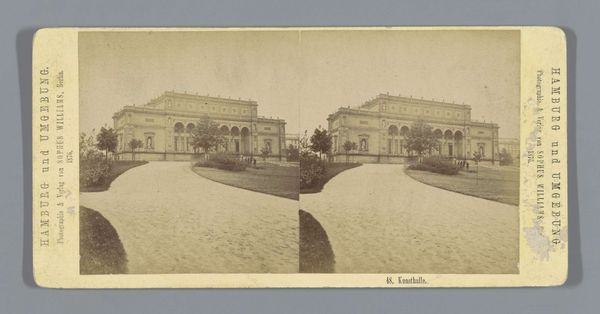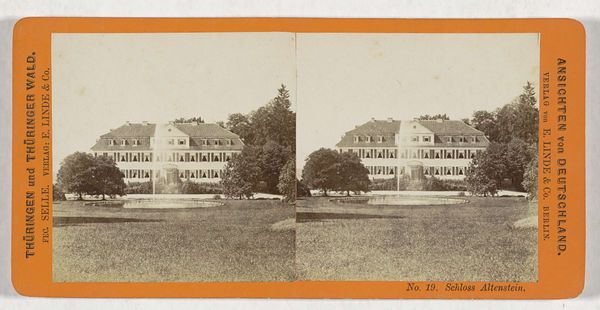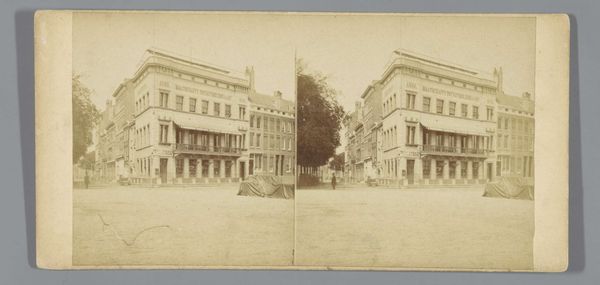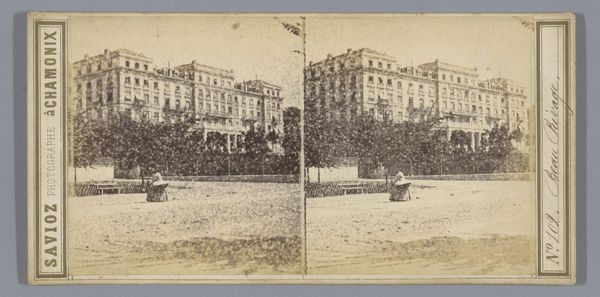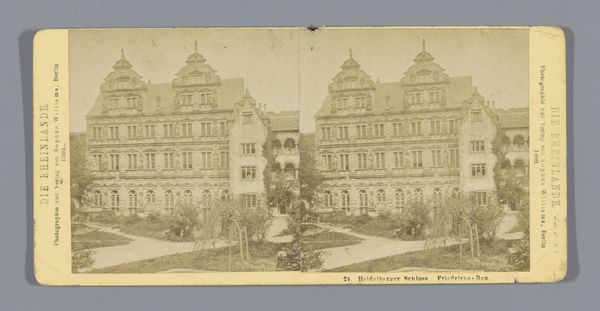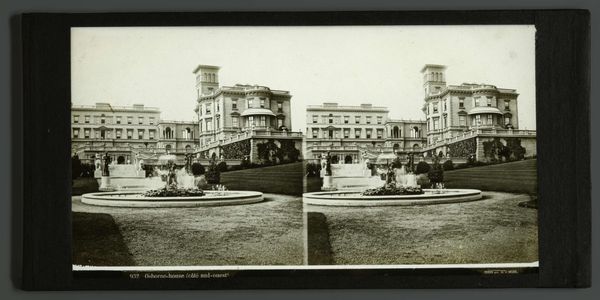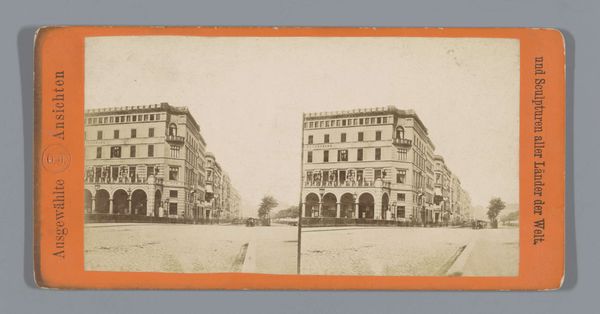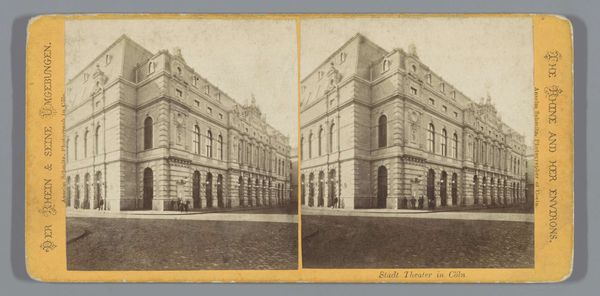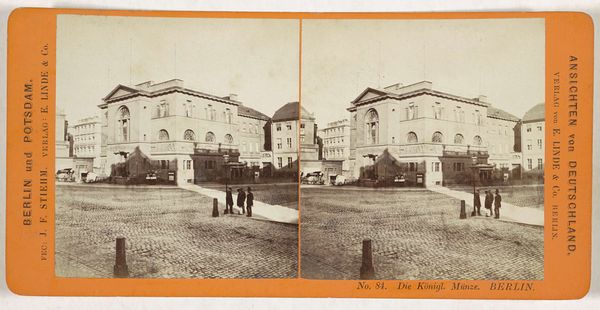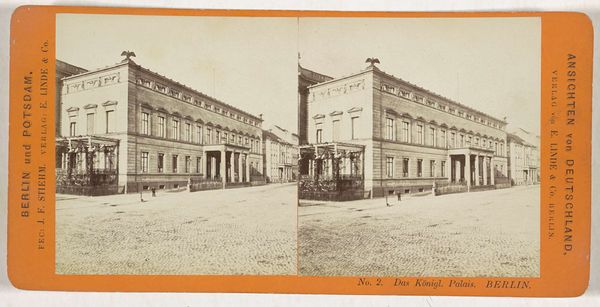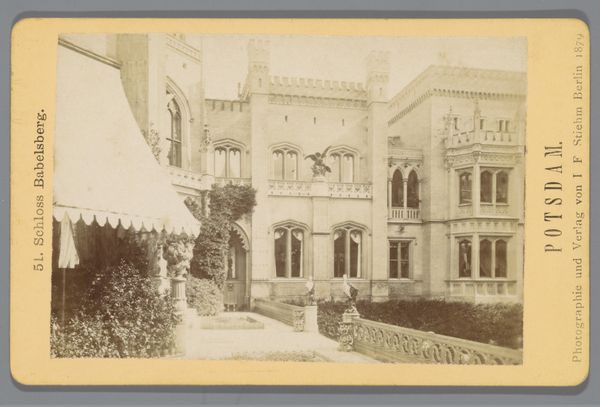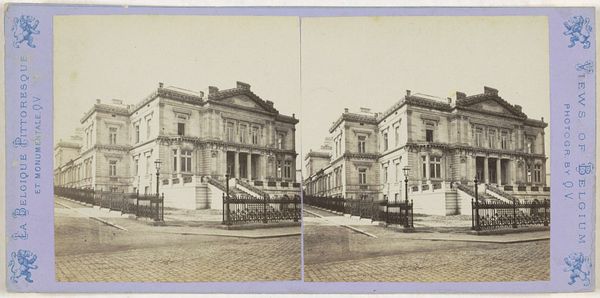
Dimensions: height 85 mm, width 170 mm
Copyright: Rijks Museum: Open Domain
This is an albumen print of a portion of the Heidelberg Castle facade, made by Sophus Williams in Berlin in 1877. The image embodies Germany’s ambivalence about its own past during the second half of the 19th century. After the Franco-Prussian War, the German empire was looking to construct a national identity. Heidelberg Castle, a ruin since the 17th century, became an important symbol in this project. Romantic artists idealized the castle, and it became an early tourist destination. This photograph, made for mass consumption, participated in the castle’s mythologization. It's important to remember that the meaning of art and architecture is never fixed. It shifts with evolving social and institutional contexts. Primary sources, such as tourist guides, newspaper articles, and government documents, can help us understand the complex ways in which Heidelberg Castle was experienced and understood in the late 19th century.
Comments
No comments
Be the first to comment and join the conversation on the ultimate creative platform.
